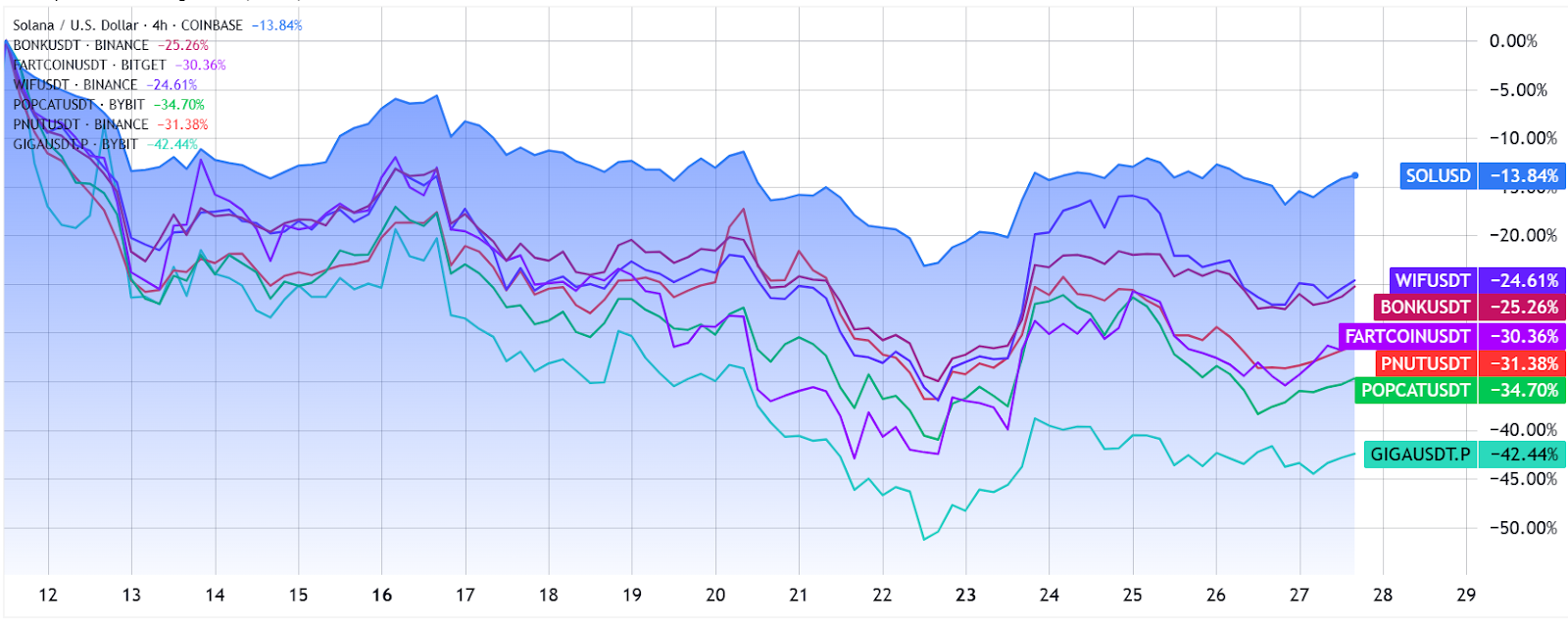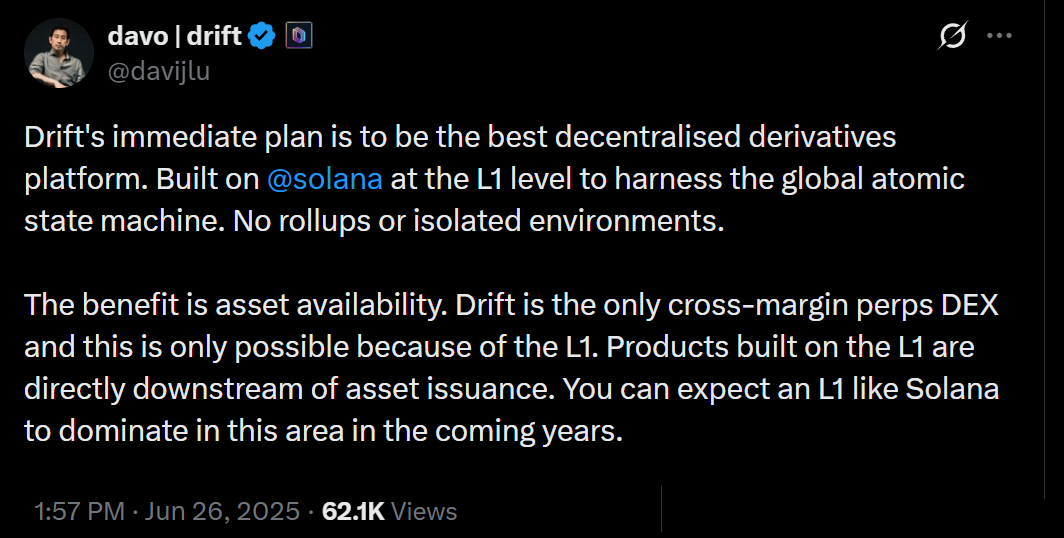Key takeaways:
-
Solana’s DEX volume surpassed Ethereum’s, but overall activity remains far below the levels seen in January.
-
Hyperliquid’s dominance in perpetual futures trading weakens investors’ confidence in Solana’s long-term lead.
Solana’s native token SOL (SOL) has declined 15% since failing to reclaim the $168 level on June 12. This bearish movement followed a period of reduced network activity and weakening demand for memecoins.
Recently, however, Solana regained the second position in decentralized exchange (DEX) volumes, raising questions among traders about the potential for SOL to reclaim the $180 level in the near term.
DEX activity on Solana reached $64.1 billion over 30 days, surpassing Ethereum’s $61.4 billion, according to DefiLlama data. While BNB Chain maintained the top spot with $159.6 billion during the same period, Solana gained market share throughout June.
Key contributors to this growth include Raydium, with $19.1 billion in volume, followed by Pump.fun with $14.2 billion and Orca at $13.9 billion. Still, overall DEX activity on Solana remains 91% below January levels.

The appeal of the memecoin sector continues to fade, with most tokens losing 25% or more in the past 16 days. Giga dropped 42%, Popcat 35%, Fartcoin and PNUT both 31%, while Bonk and WIF each declined 25%. These losses dampen enthusiasm about Solana’s rising DEX market share.
Another concern for SOL investors is the rise of Hyperliquid, which has emerged as the dominant blockchain for perpetual trading. This shift has reduced interest in both Ethereum layer-2s and standalone decentralized applications (DApps) on Solana and BNB Chain.

According to DefiLlama, Hyperliquid’s 30-day trading volume was 84% higher than the combined total of its five largest competitors. More significantly, its success has fueled speculation that other projects may launch their own independent blockchains, potentially including major Solana-based DApps such as Pump.fun.
This fear has weakened traders’ conviction that Solana can become the dominant player. That loss of confidence is visible in derivatives markets, where demand for leveraged long positions in SOL has diminished.

In a neutral market, perpetual futures typically show an annualized funding rate of 5% to 12% for long positions. When this rate turns negative, it signals bearish sentiment as shorts are paying to maintain their trades. Over the past 30 days, derivatives data shows no sustained optimism for SOL.
The biggest potential catalyst for SOL remains the possible approval of a Solana spot exchange-traded fund (ETF) by the US Securities and Exchange Commission, with a decision expected in October. Until then, bulls are counting on the network’s technical strengths to support price recovery.
Related: US crypto ETF approval odds surge to ‘90% or higher’ — Bloomberg analysts

Davo, from Drift Protocol, noted that Solana’s robust base layer supports “asset availability,” meaning tokens can be natively used as collateral. He also emphasized the absence of an “offchain matching engine,” which helps protect DEX users from transaction reordering or prioritization.
Despite its association with memecoins and token launches, Solana’s ecosystem has broader use cases. And while Hyperliquid may be an outlier, other upstart blockchains, such as Berachain, have failed to maintain meaningful deposit levels. Considering Solana’s low fees and high scalability, a return to the $180 mark could happen even before the ETF decision in October.
This article is for general information purposes and is not intended to be and should not be taken as legal or investment advice. The views, thoughts, and opinions expressed here are the author’s alone and do not necessarily reflect or represent the views and opinions of Cointelegraph.

